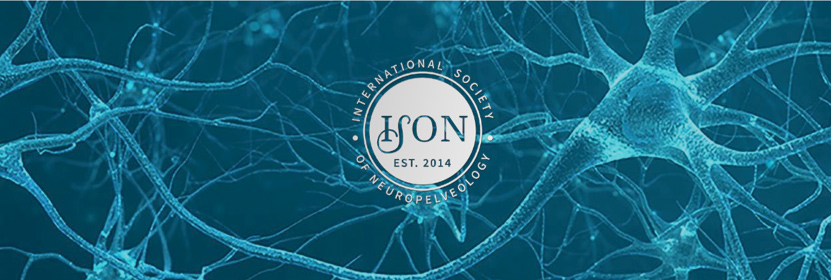Neuropelveology Surgery

Application of Neuropelveology knowledge to pelvic surgery
Neuropelveology equips gynaecologists and other pelvic surgeons with in-depth knowledge of pelvic nerves to be able to safely manage complex pathologies that involve these nerves. It teaches surgeons safe nerve-sparing surgery when possible, how to recognise and manage nerve injury when it occurs, and safe proven approaches to deal with difficult diseases involving pelvic nerves.
Neuropelveology can be applied to the following conditions:
- Deeply infiltrative endometriosis (DIE) for nerve-sparing endometriosis excision surgery
- Sciatic nerve endometriosis
- Vascular entrapment syndrome
- Pelvic nerve injury from surgical procedures
- Excision of pelvic nerve tumour (Schwannoma)
- Implantation of electrodes for pelvic organ dysfunction (Dr Chou does not perform this procedure)
Neuropelveology and Robotic Surgery
Neuropelveology advocates a laparoscopic approach to conditions affecting pelvic nerves and not the traditional open laparotomy approach. Robotic surgery is the most advanced form of laparoscopic surgery with improved vision, instrumentation and control and complements very well for the delicate neuropelveological procedures. Dr Chou has been performing robotic surgery since 2011 and performs the more complex surgeries including neuropelveology procedures such as sciatic endometriosis or entrapment with robotic platform.
Robotic Nerve-Sparing Endometriosis Excision Surgery
Endometriosis is a common gynecological condition that affects 1:10 women and is a common cause of pelvic pain and infertility. Endometriosis can be classified into 3 different types: 1) Superficial peritoneal endometriosis, 2) Ovarian endometriotic cyst (endometrioma / chocolate cyst) and 3) Deeply infiltrative endometriosis (DIE). Thankfully, the vast majority of women have superficial peritoneal endometriosis which are generally not as aggressive. DIE on the other hand, can be very aggressive and can invade into adjacent pelvic organs including the vaginal wall, bowel, bladder and ureter. It can also grow around the pelvic nerves that innervate these visceral organs. These nerves are very delicate, fine structures located deep in the pelvis and are called the autonomic nerves. In even more severe cases, DIE can grow further to involve the spinal nerves that arise from the spinal cord, usually from the second to fourth sacral nerve roots (S2-S4). The principle of nerve-sparing endometriosis excision surgery is the same as that of nerve-sparing cancer surgery, which is to avoid harming these nerves in order to preserve organ function. This is particularly important when dealing with severe DIE involving the bowel where significant bowel surgery might be required. The improved vision helps to clearly visualise these fine structures deep in the pelvis. The steadiness and the long reach of robotic instruments further improve surgeon’s capability to perform precise surgical maneuvers.
Robotic Surgery for Sciatic Nerve Endometriosis
The sciatic nerve is the largest and longest nerve in the body and is formed from the spinal nerve roots from the fifth lumbar (L5) to third sacral (S3) level of the spinal cord. These nerve roots come together in the posterolateral aspect of the deep pelvis and exit the bony pelvis through the greater sciatic foramen. It then travels behind the hip joint and down the posterior aspect of the thigh. It innervates the muscles that extend the hip and flex the foot. The sciatic nerve also supplies the sensation of the back of the thigh, lower leg and foot. Irritation of the sciatic nerve results in the typical “sciatica” pain, that is characterised by a severe back pain that radiates down the back of the leg. Whilst most common causes of sciatica are related to musculoskeletal conditions of the spine, irritation of the sciatic nerve by any other causes, including sciatic endometriosis, can result in similar symptomatology. It is the rarity of sciatic endometriosis that makes it a little-known entity. Therefore, patients with sciatic endometriosis are often referred to either orthopaedic surgeons or neurosurgeons.
Symptoms of sciatic endometriosis
The main character that differentiates a sciatica caused by sciatic endometriosis is the coinciding of painful attacks with a woman’s menstrual period. It’s not uncommon to experience some mild discomfort in the lower back with some radiation down the back of both legs during menstruation, which is highly unlikely to be due to sciatic endometriosis. Pain with sciatic endometriosis is excruciating and almost exclusively affects only one side. Over time, the sciatic pain becomes more constant and more severe, with acute exacerbations during menstruation. Sitting, standing or lying on that side of the body, may exacerbate the pain in the back, buttock and hip. Pain and associated muscle weakness can limit leg and foot movements that can affect walking. In severe cases, patients can lose the ability to lift the foot leading to a “foot drop”. This weakness makes walking up the stairs particularly difficult. There can be altered sensation in the leg, including tingling often described as “pins and needles”, reduced sensation, or numbness over the areas of sciatic nerve innervation. There may not be any endometriosis elsewhere in the pelvis, which usually give rise to the more typical symptoms of endometriosis including menstrual pelvic pain, non-menstrual pelvic pain and painful sexual intercourse.
Diagnosis of sciatic endometriosis
Sciatic endometriosis may be suspected from the characteristics of sciatic pain and diagnosis can be confirmed by examination and imaging. However when the sciatic pain is not identified as being related to menstruation or when there is no obvious menstrual pelvic pain, diagnosis of sciatic nerve endometriosis can be very challenging.
Vaginal examination can confirm tenderness over the pelvic portion of the sciatic nerve. This is just above the ischial spine and sacrospinous ligament, which forms the lower border of the greater sciatic foramen, through which the sciatic nerve exits the pelvis. Pressure over this area may reproduce tingling and shooting pain along the leg. Patients may have an obvious altered gait from pain and muscle weakness. A “foot drop” with associated weakness with foot flexion may be evident. Wastage of gluteal muscle may be seen and felt. Pressure over the buttock where the sciatic nerve exits from the pelvis at the greater sciatic foramen can induce pain. Neurological examination may reveal altered sensation and a reduced or absent ankle reflex. Lifting the leg off the bed with the leg straight is likely to be limited by pain.
A specialised DIE Ultrasound can be helpful to diagnose ovarian endometriotic cysts and pelvic DIE but not sciatic nerve endometriosis. CT scan is usually not helpful. An MRI scan can identify endometriotic lesion over the sciatic nerve when it is large enough, however may miss smaller endometriotic lesions. An MRI scan is very important to rule out other possible causes of sciatica, such as vascular entrapment and other musculoskeletal conditions. It is imperative that these patients have an expert neurosurgical consultation to rule out neurosurgical causes for their pain. When MRI is negative but clinical history and examination is highly suggestive of sciatic nerve endometriosis, a laparoscopy may have to be considered for confirmation of diagnosis and excision of possible disease.
Treatment of sciatic endometriosis
A short trial of medical therapy is reasonable when there is diagnostic uncertainty but when a definitive lesion is identified on MRI associated with significant neurological symptoms and deficits, surgery should not be delayed. Sciatic endometriosis can lead to the destruction of the sciatic nerve with temporary or permanent loss of nerve function.
In human body, nerves and blood vessels often coexist in close proximity in the so called “neurovascular bundle”, therefore it is of no surprise that there are large and complex vascular structures surrounding the largest and longest nerve in the body. This dangerous area of the body is rarely visited in the normal practice of benign gynaecology and therefore requires specific knowledge, training and skill sets to minimise chance of complication. Once surgery is decided, the aim of the surgery is the complete excision of the endometriotic lesion in one procedure as repeat surgery in the area will be more difficult and carries higher risk.
The ideal approach is by laparoscopic surgery and preferably with robotic assistance. Open surgery should be avoided as laparoscopic surgery provides all the proven benefits of minimal invasive surgery, including smaller incisions, less postoperative pain and a shorter recovery period. A transgluteal approach for sciatic nerve endometriosis should not be performed as the disease is primarily inside the pelvis and should be approached from the pelvis side. A transgluteal approach requires a large incision over the buttock, cutting through all the gluteal muscles to reach the back of the sciatic nerve, when the disease is on the front of the sciatic nerve. Concurrent laparoscopic and transgluteal approach is rarely required.
Postoperative recovery
Following the surgery for sciatic endometriosis, the pain often improves for days to weeks, then returns, possibly more severe than it was before. This pain will then subside over time, resulting in a permanent decrease in sciatic pain. The initial improvement in the pain is likely to be related to the temporary dysfunction of the nerve as it doesn’t sense and convey the surrounding painful stimuli. There can be a feeling of numbness in the area. The worsening of the pain thereafter is thought to be related to the recovery of the nerve and a delayed response to the recent surgery. The nerve pain can be experienced as tingling or electrical shock like sensations. There may be new areas of altered sensation and possible weakness over leg, buttock or genito-anal area, which gradually recovers over weeks to months. Some of the more typical symptoms experienced after such surgery include altered sensation on the inner aspect of the thigh on the same side of the disease, and possibly some mild weakness in thigh movement. This is due to the inevitable retraction of the obturator nerve during the surgery. This is a well-recognised pattern of recovery following such surgery.
Two important aspects of care following excision of sciatic nerve endometriosis are the use of neuropathic pain medication such as Lyrica, and intense physiotherapy. The use of neuropathic pain medication manages the expected fluctuating postoperative neuropathic pain and prevents possible development of “phantom pain”. It is recommended to start this neuropathic pain medication soon after surgery, and the dosage often needs to be increased. Neuropathic pain medication may be required for up to 6 months. Physiotherapy is required to minimise scar formation around the nerve where the operation took place in order to keep it free and mobile. It also helps to maintain muscle bulk and prevent atrophy from disuse, particularly when there has already been prior muscle wastage related to nerve injury.
Significant improvement in pain is expected, however this can be gradual and may take months to years depending on the extent of nerve injury at the time of surgery. In his five year follow up study, Professor Possover found that for patients with a previously affected gait who had a significant part of their sciatic nerve resected, there was a good majority of patients who had their gait restored, though it may take approximately 3 years.
Robotic Surgery for Vascular Entrapment Syndrome
Vascular entrapment syndrome is a condition where dilated pelvic blood vessels compress the pelvic nerves, giving rise to chronic pelvic pain. This condition is also called “neuro-vascular conflict”. The pain felt in vascular entrapment syndrome is characteristically more severe during menstruation and is aggravated by maneuvers that increase intra-abdominal pressure such as straining, prolonged sitting and the Valsalva maneuver. Pain is relieved by lying down and usually does not wake the patient at night. There are no associated sensory or motor deficits. A pelvic ultrasound or MRI can detect dilated pelvic vessels around the lumbosacral plexus. Laparoscopic decompression is supported by medical literature to yield a high rate of success for pain improvement.
Robotic Surgery for pelvic nerve injury from pelvic surgery
In rare instances, pelvic surgery can result in pelvic nerve injury. Pelvic nerve injuries can occur from transection, thermal injury from electrosurgery, inadvertent suturing and entrapment from secondary scarring. It may be apparent immediately after surgery, as an unexpected, disproportionately severe postoperative pain or altered pelvic organ function. Alternatively, it may develop sometime after the surgery, over a period of time secondary to scarring or new vessel formation that entraps the nerve. The most commonly injured somatic pelvis nerve according to Professor Possover’s large series on surgery for pelvic nerve injury from pelvic surgery is the second sacral nerve root (S2) on the right, followed by the sciatic nerve on the left. Procedures that can cause such nerve injuries include prolapse surgeries such as rectopexy, colpopexy, uterosacral ligament suspension and sacrospinous fixation. Laparoscopic surgery can help to explore, confirm the diagnosis and remove the offending suture, scarring or vessels that may be entrapping the nerve to relieve pain and possible restoration of nerve function.
Robotic Surgery for Pelvic Nerve Tumour
Schwannomas are benign growths of Schwann cells that surround peripheral nerves. A schwannoma is a typical example of a pelvic nerve tumour that is suitable for laparoscopic removal after consultation with neurosurgeon.
Helpful Links:
Professor Marc Possover’s article on Sciatic Endometriosis
Professor Marc Possover’s article on Neuropelveological approach to pathologies of the pelvic nerves















